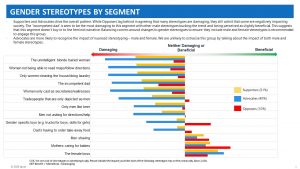[su_menu name=”Self-Regulation” class=”sub-page-menu”]
AANA’s Code of Ethics Review: Ensuring advertising reflects community expectations
The AANA is committed to upholding advertising standards in line with prevailing community sentiment and has commenced a review of the Code of Ethics, the governing code for all advertisers.
The AANA asked the community what standards they expect from advertising and over 170 submissions were received from the community, industry and government. These responses fed into proposed changes to the AANA Code of Ethics. The AANA then engaged IPSOS to test these proposed changes with over 2000 Australians.
The key areas of concern raised by the community and tested by Ipsos include:
- Objectification and sexualisation in advertising
- Gender stereotypes
- Violence/horror themes in advertising where children form part of the audience
Ipsos tested proposed changes such as:
- Strengthening the rules prohibiting violence or the use of menace in advertising
- Strengthening rules around the use of sexual appeal, especially where unrelated to product or where children form part of the audience
- Banning gender stereotypes
Below is a summary of the Ipsos research findings:
Objectification and sexualisation in advertising
De-sexualisation of advertising is seen as a step in the right direction. Community sentiment towards sexualisation in advertising is magnified when used overtly and for reasons unrelated to product. Many disagree on a moral ground, a general feeling, that it’s inappropriate and no longer acceptable in the community. It being available in the public sphere is an affront to some with no opt out available. There is recognition that care needs to be taken when the audience includes children.
Qualitatively, the sexualisation of advertising is also credited with setting unrealistic beauty standards and perpetuating body image issues for young people. With significant prompting, there is a latent understanding that normalisation of the objectification of women is impacting dress standards and attitudes towards women.

Gender stereotypes
The majority of the community (56%) see the changes around Gender Stereotypes as a positive step towards modernising advertising standards and reducing outdated gender imagery, reducing discrimination. Even amongst those who agree with the changes, there is a pocket that sees stereotypes as harmless and realistic portrayals of the community – in that some roles are predominantly male or female. It is important to note that any proposed changes to the Code only affect negative or damaging stereotypes.
“Stereotypes make women and men feel like they only have a specific role. If boys keep seeing men as construction workers or race car drivers, it reinforces their place in society. Similar to seeing women in a more sexualised way. I don’t think always portraying men or women in a certain way can ever be positive.” – Older, Progressive, Male
Stereotypes in advertising are seen as contributing to gender roles and perpetuating damaging imagery of what it means to be masculine or feminine. Overall, the community agrees with this rhetoric. Female stereotypes are seen to be the most damaging, alongside the ‘incompetent dad.’ Even Opposers, who take no issue with the use of stereotypes in advertising, admit that these obvious portrayals are damaging.


Violence & Horror themes in advertising
There is a general distaste for violence in the community and this is echoed in the broad overall support (79%) for the changes to the Code of Ethics in regards to Violence/Horror themes. The damage caused to children by representations of violence is well understood and attempts to minimise this damage is favourable.
- Violence leads to violence
- Makes violence more acceptable
- This sentiment is echoed across all segments; this is attributed to the strong family values and an alignment with personal attitudes.
Violent video game ads are perceived as more harmful than horror movie advertising but both are thought to be inappropriate in media channels that may be consumed by children. This kind of advertising requires an opt-out for the community.

The proposed changes to the Code of Ethics are broadly supported by the community in the research and the changes will align advertising standards with community expectations and significantly increase the favourability towards advertising.


